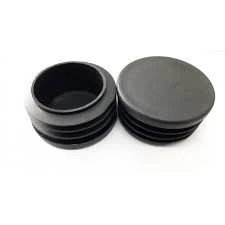Mobile:+86-311-808-126-83
Email:info@ydcastings.com
design considerations for casting
Design Considerations for Casting
Casting is a fundamental manufacturing process that involves pouring molten material into a mold to create various shapes and structures. While casting offers significant advantages in terms of complexity and material utilization, there are several design considerations that must be taken into account to ensure the success of the casting process.
1. Material Selection The choice of material is crucial in casting. Different metals and alloys exhibit varying properties such as melting point, fluidity, and solidification characteristics. For example, aluminum is favored for its low density and excellent corrosion resistance, whereas iron is selected for its strength and durability. The material's behavior during casting and its final properties should align with the intended application of the cast part.
Design Considerations for Casting
3. Gating System The gating system is critical in controlling how molten metal flows into the mold cavity. It includes the sprue, runners, and gates. A well-designed gating system reduces turbulence and ensures an even distribution of the molten metal, minimizing the risk of defects such as porosity or cold shuts. Designers must consider the size and shape of these components to optimize flow and cooling rates.
design considerations for casting

4. Shrinkage and Cooling During the cooling process, metals undergo contraction, which can lead to dimensional changes or internal stresses. To mitigate these issues, designers must anticipate shrinkage and account for it in the mold design. Additionally, controlling the cooling rate can influence grain structure and mechanical properties. Strategies may include designing for uniform wall thickness and incorporating risers that allow for molten material to compensate for shrinkage.
5. Surface Finish and Tolerances The desired surface finish and tolerances should be identified early in the design process, as these factors can significantly impact production costs and the performance of the final product. Achieving a high-quality finish may require secondary operations, while tighter tolerances can complicate mold design and increase manufacturing costs. Balancing these requirements with the capabilities of the casting process is essential.
6. Design for Manufacturing Designing for manufacturing is an overarching principle in casting. This includes simplifying geometric complexity, minimizing the number of cores, and optimizing part orientation. The goal is to create a design that is not only functional but also economically viable to produce. Collaborating with casting engineers during the design phase can help identify potential issues early on, leading to smoother production processes.
Conclusion In conclusion, effective casting design involves a thorough understanding of materials, mold design, gating systems, shrinkage, surface finish, tolerances, and manufacturing processes. By addressing these considerations, engineers can create efficient, high-quality cast parts that meet both performance standards and cost-efficiency goals. As technology advances, the integration of simulation tools and advanced materials will continue to enhance the casting design process, paving the way for innovative solutions in manufacturing.
-
Why Should You Invest in Superior Pump Castings for Your Equipment?NewsJun.09,2025
-
Unlock Performance Potential with Stainless Impellers and Aluminum End CapsNewsJun.09,2025
-
Revolutionize Your Machinery with Superior Cast Iron and Aluminum ComponentsNewsJun.09,2025
-
Revolutionize Fluid Dynamics with Premium Pump ComponentsNewsJun.09,2025
-
Optimizing Industrial Systems with Essential Valve ComponentsNewsJun.09,2025
-
Elevate Grid Efficiency with High-Precision Power CastingsNewsJun.09,2025











